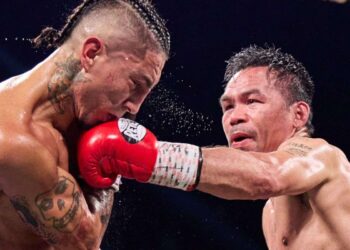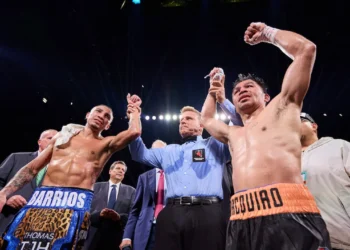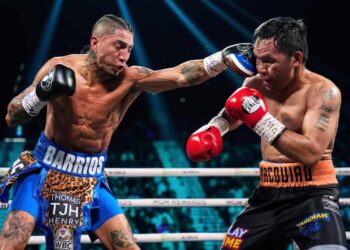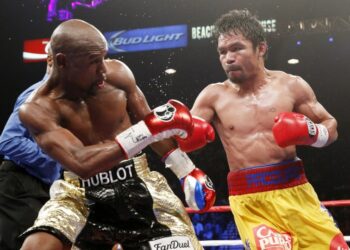On June 9, 2025, former heavyweight champion Mike Tyson toured the Drug Enforcement Administration’s (DEA) Northeastern laboratory in Chelsea, New York City, donning a blue DEA coat for dramatic effect. The event aimed to raise awareness about the lethal threat posed by illicitly manufactured fentanyl. Tyson was accompanied by Alina Habba, the Acting U.S. Attorney for the District of New Jersey, who recently launched a “strike force” targeting fentanyl precursor traffickers .
During the tour, Tyson was shown seized narcotics—bags containing marijuana, psychedelic mushrooms, vapes, counterfeit Adderall tablets, and fentanyl-carfenanil bricks. Witnessing first‑hand that a mere “pinch” of fentanyl can be fatal (he learned that “one pill can kill”), Tyson appeared visibly shaken . He admitted, “I was never educated on fentanyl and this is new to me. I’m just here to be educated on the laws.”
—
🎥 Watch Tyson’s Tour Highlights
—
🌿 Tyson’s Shift to Cannabis Entrepreneurship
Tyson’s transformation from boxer to entrepreneur is driven by his personal journey away from substance abuse—cocaine, alcohol, and cigarettes. He reported being clean of cocaine, alcohol, and tobacco for nine years . His company, Tyson 2.0, produces THC-infused gummies, including novelty “Mike Bites” shaped like ears—a cheeky reference to his 1997 ear-biting incident .
His entrance into the cannabis industry isn’t just business—it’s advocacy. Tyson stressed the importance of safe, regulated cannabis as an alternative to black-market products that can be contaminated or laced with fentanyl. “We’re trying to make the whole cannabis universe safe,” he says .
—
🎤 Alina Habba on the Campaign
Alina Habba, the Acting U.S. Attorney, emphasized the gravity of the fentanyl crisis, calling it a “real toxic problem” that demands urgent attention . She lauded Tyson and his wife, Kiki, as “proponents of safe use”, highlighting their commitment to quality and compliance—noting their cannabis isn’t from questionable sources overseas laden with pesticides or worse .
Habba reiterated the interplay between the fentanyl threat and the cannabis industry: illicit substances not only kill, but illicit cannabis can also be bred with unforeseen dangers—material she believes Tyson is effectively confronting.
—
⚖️ Tyson’s Challenge to Drug Scheduling
The day after the lab tour, Tyson posted on X:
> “How is cannabis a schedule I but fentanyl that kills millions is schedule II? Something is broken and needs fixing.”
He challenged long-standing federal classification: cannabis remains a Schedule I substance—high potential abuse, no accepted medical use—while lethal fentanyl stays Schedule II. His comment echoes growing criticism from reform advocates who argue such inconsistency hinders research, judicial fairness, and relief from the opioid epidemic.
—
🌐 Regulatory & Political Context
Fentanyl deaths: Illicitly manufactured fentanyls account for roughly 70% of U.S. overdose fatalities. In NYC alone, nearly 2,200 overdose deaths were recorded last year .
Cannabis rescheduling status: The Biden administration’s discussions to down‑schedule or fully declassify marijuana remain stagnant, despite mounting support from politicians, advocates, and industry voices—including Tyson.
Habba’s background: A former Trump White House attorney and Super PAC advisor, Habba’s current public stance supporting safe cannabis usage signals unusual bipartisan consensus around cannabis reform .
—
🙋 Tyson’s Personal & Public Impact
Transparency and candor: Tyson’s candidness about his addiction history resonates widely. In a 2019 Joe Rogan interview he shared: “I’m a junkie,” adding that “without weed I don’t like who I am sometimes” .
Bringing attention: With his celebrity cachet, Tyson draws media and political attention to public health messaging—especially around fentanyl awareness.
Symbolic alignment: His photo op with Trump at a UFC event (just before the lab visit) and later visit to the DEA alongside Habba may suggest strategic coalition‑building across ideological divides, though specifics of any policy discussions remain unverified .
—
✅ Why This Matters (700‑Word Summary)
Tyson’s participation is more than symbolic—it’s a strategic alignment of regulatory enforcement (DEA, U.S. Attorney) with private industry advocating for responsible alternatives to deadly street drugs.
Public education: Tyson’s message—“one pill can kill”—cuts through generational ignorance around fentanyl’s potency.
Cannabis as an alternative: His business underscores that legal, regulated cannabis can be safer than unregulated substances that may be contaminated or adulterated.
Policy pressure: By publicly questioning drug scheduling, he joins activists pushing for cannabis decriminalization and rescheduling.
Cross-sector partnerships: Tyson and Habba working together showcases a model for future cooperation between federal law enforcement, cannabis entrepreneurs, and drug policy reformers.
—
Alina Habba’s Key Takeaways
1. Urgency of fentanyl action: She repeatedly called the illicit drug supply chain “toxic” and praised the DEA’s seizure efforts .
2. Support for safe cannabis: Habba specifically recognized Tyson’s commitment to ensuring cannabis products are **”free from pesticides, not from China”** .
3. Shifting norms: Her collaboration with Tyson—and willingness to praise a cannabis entrepreneur—signals evolving federal attitudes toward legalized cannabis under strict regulation.
—
Bottom Line
Mike Tyson’s unexpected cameo in a DEA anti‑fentanyl campaign, alongside Alina Habba’s clear endorsement, marks a pivotal moment. It blends celebrity influence, law enforcement outreach, and cannabis advocacy into a unified message: public safety requires both awareness of fentanyl dangers and support for regulated cannabis as a safer alternative. By questioning federal drug classifications, Tyson and Habba add momentum to ongoing reform debates—offering a 58‑year‑old boxing legend, a federal prosecutor, and a federal a
gency united in a surprising—but powerful—stance to combat America’s overdose crisis.











